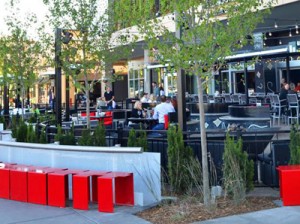 When choosing commercial patio tables, it is important to consider the type of exposure to which your patio furniture will be subjected. The elements can quickly create wear and tear on outdoor furniture, but there are ways to prevent damage and to keep furniture in good shape for a long time. There are three main types of exposure to consider when choosing restaurant patio furniture.
When choosing commercial patio tables, it is important to consider the type of exposure to which your patio furniture will be subjected. The elements can quickly create wear and tear on outdoor furniture, but there are ways to prevent damage and to keep furniture in good shape for a long time. There are three main types of exposure to consider when choosing restaurant patio furniture.
UV exposure
Everyone loves to enjoy a nice meal outdoors in the sunshine, but outdoor patio furniture is not so appreciative of the sun’s rays. Wood can bleach, crack and create a risk for splinters. Plastic can break and crumble. Metal, though it will not break down, can become heated by the sun, making it uncomfortable. When dealing with a high UV exposure patio, it is best to select furniture that has been treated to protect it from UV rays or to provide ample shade cover to limit exposure.
Salt air exposure
Salt air can be truly rough on outdoor patio furniture. Salt eats away at the material and even the substances used to construct the furniture, such as glue. While a covering can increase the life of furniture consistently exposed to salt air, purchasing furniture made using materials that can withstand a seaside climate is a better investment. Resin wicker, teak wood and some plastics are good choices for restaurant patio furniture that will be exposed to salt air.
Fungal exposure
Restaurant patio furniture that is exposed to moisture on an ongoing basis runs the risk of developing fungus or mold. If the patio area is heavily shaded, with not much natural sunlight to dry things out, or if the environment is simply hot and humid, mold and fungus resistant outdoor patio furniture should be considered. Metal is the best choice, followed by plastic. Some patio furniture made of wood, such as cedar, can be naturally mold resistant, or the wood can be treated to help with fungus prevention. If furniture does develop mold or fungus, it is likely because of continued dampness. Place the furniture in the sun for several hours to dry out the material before cleaning.
By carefully assessing the natural environment and exposure to sun, salt air and dampness, restaurant designers and owners can choose outdoor restaurant furniture that is well-suited for the environment, as well as the décor.
